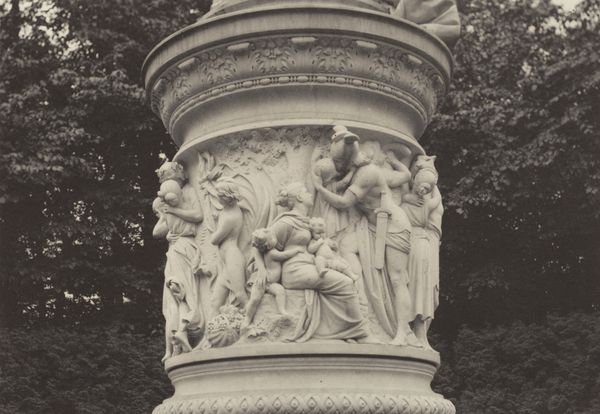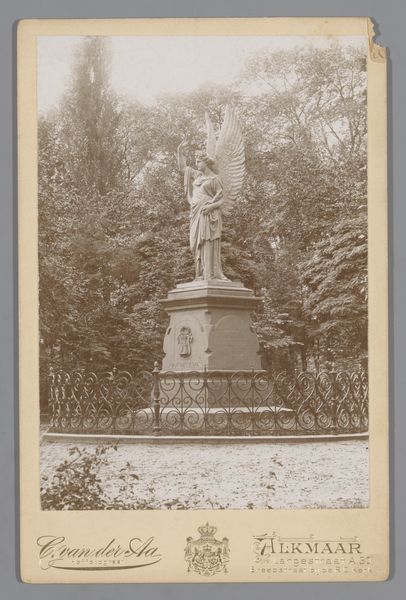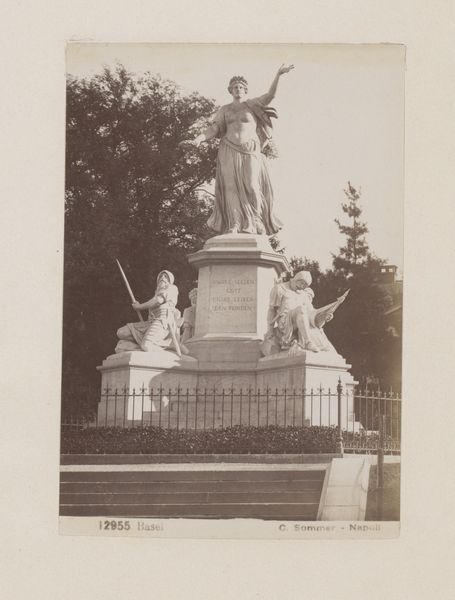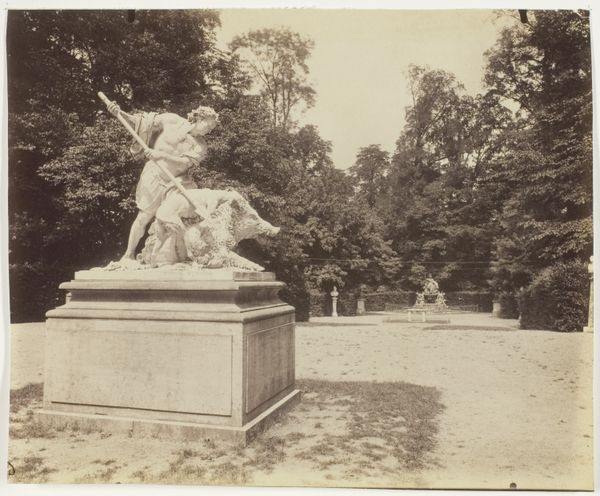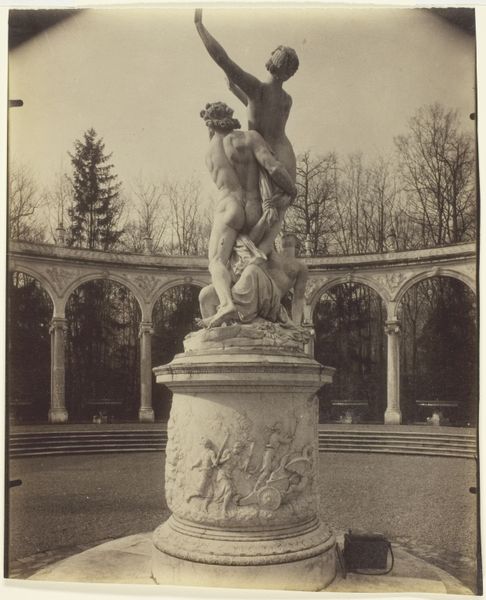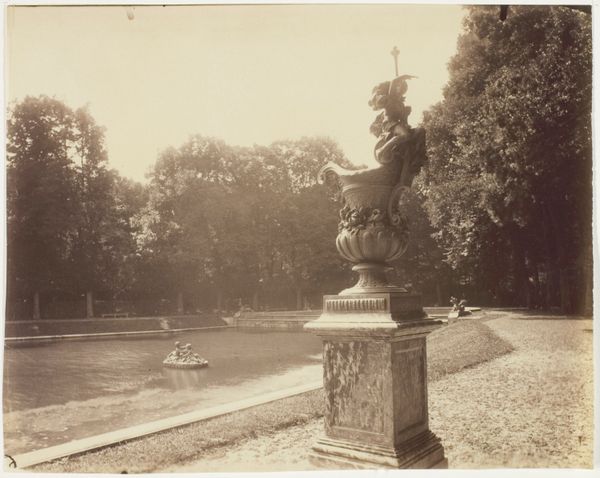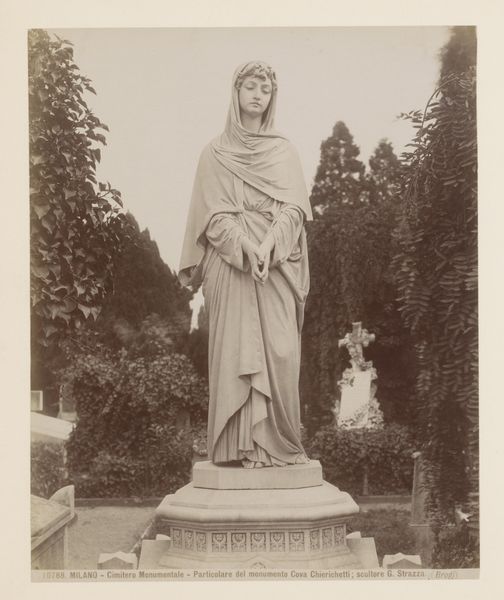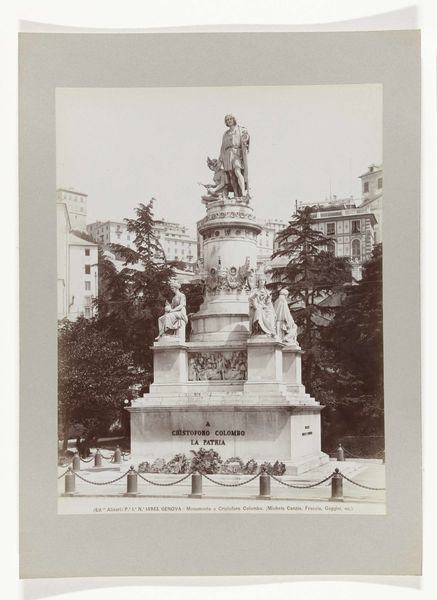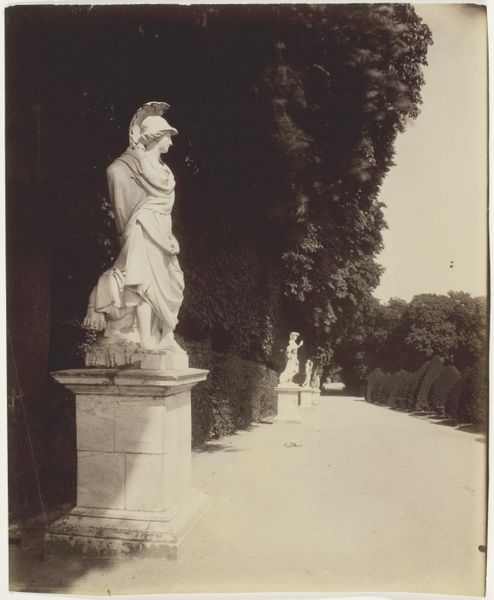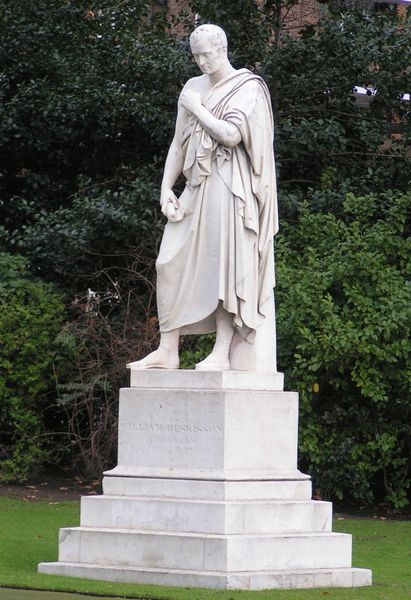
photography, sculpture
#
portrait
#
neoclassicism
#
sculpture
#
photography
#
sculpture
#
statue
Dimensions: sheet (trimmed to image): 18.1 × 11.5 cm (7 1/8 × 4 1/2 in.) page size: 34.8 × 27 cm (13 11/16 × 10 5/8 in.)
Copyright: National Gallery of Art: CC0 1.0
Curator: Alfred Stieglitz gives us this photograph, "Goethe, Berlin," sometime between 1886 and 1896. Editor: It’s undeniably imposing. Even in this somewhat faded photographic print, the monument projects such formality and… well, authority. You can almost feel the weight of cultural expectation. Curator: Exactly! The monument itself reflects the cultural apotheosis of Goethe during the 19th century, but let's consider Stieglitz's own agenda as an artist. Here, he is not only documenting a historical landmark, but also signaling photography's arrival as a high art form capable of interpreting established traditions. The printing process itself was painstakingly achieved, elevating photography beyond mere record-keeping. Editor: And consider the original context of such monuments. These weren’t simply erected to honor greatness. They were tools in shaping public memory, instilling values and ideals in citizens of a rapidly industrializing nation. Who was Goethe for the everyday person? Curator: A cultural hero, precisely. But look closely at the material contrasts present in this image. The wrought iron fencing suggests civic control and order around this public space, while the dense backdrop of untamed trees emphasizes the way culture is constructed against—or within—nature. The artist’s choice to capture it under such filtered light transforms stone and metal into tones mimicking charcoal. Editor: The soft focus lends an almost dreamlike quality, distancing us. You have a man literally elevated on a pedestal while Stieglitz captures the entire constructed moment—complete with cherubs! Curator: Yes! By drawing our eye not just to the figure but to the medium itself—the specific materiality of photographic creation—Stieglitz also shows us that Goethe's presence in the social and artistic milieu becomes available and interpreted to us precisely through art. Editor: Well, thinking about the monument, I see it as an effort to instill national pride, and this photograph as an aesthetic re-evaluation of cultural artifacts, all very typical for that era. Curator: For me, looking at it again, I still think that Stieglitz directs our gaze toward a re-interpretation of a neoclassical tradition through photographic art. Editor: Indeed, a potent interplay of art, material, and social symbolism caught in a moment.
Comments
No comments
Be the first to comment and join the conversation on the ultimate creative platform.
